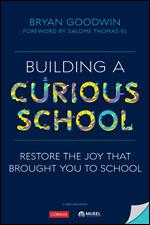One of the more interesting findings to emerge from studies of curiosity (which I share in my new book, Building a Curious School) is this: Curious people have better relationships.

It’s not a huge correlation, mind you; curiosity predicted only about 6 percent of the perceived variance in teacher-student relationships. Yet it was a better predictor of relationships than teachers sharing the same socioeconomic status or racial background as their students—at least according to teachers’ self-reporting.
Why does any of this matter? Well, as reported in a meta-analysis of 119 studies, positive teacher-student relationships boost student success. These relationships, of course, do not
Yet being curious about our students appears to be a good starting point for building relationships with them. Our book, Building a Curious School, provides a simple tool: an interest inventory on p. 159 that you can use with your students (in any grade level or subject area) to get to know them better. It’s worth noting that the tool isn’t designed to reveal what students are passionate about—which tends to be a bit grandiose and off-putting for many students—but rather to help you (and your students) better understand their interests, which, in itself, is a good way to build any relationship. Here are a few examples:
- What subjects or classes do you most enjoy in school?
- What was the last thing you felt curious enough about to investigate on your own?
- If you could ask a remarkable person for advice, who would it be? What would you ask?

At the same time, demonstrating curiosity about your students can be the start of beautiful relationships. It shows students you care enough about them to get to know them a little better and after all, as the saying goes, no one cares how much you know until they know how much you care.
—–

